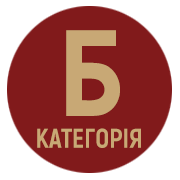AUTHOR'S SONG AS A VERBAL AND MUSICAL MEANS OF EDUCATION OF STUDENTS
DOI:
https://doi.org/10.32782/apv/2022.2.19Keywords:
amateur performance, professionalism, author's song, folklore, culture, aesthetics, content structure, high quality.Abstract
The article describes the relationship between music and the creative development of the younger generation, because thanks to music lessons, the potential spiritual resources of youth are revealed. It is noted that musical education depends on the conditions of social and political life, the level of culture and seeks to find new ways of spiritual development. It is noted that the author's song is a non-commercial art form, it is a verbal and musical way of artistic and figurative reflection of the author's vision of the world around him, modern reality. It is characterized by a mutually enriching unity of words, music and performance. It is noted that the author's song is based on artistic poetic language, which should convey the author's idea to the listener as accurately as possible. It is analyzed and proved that it differs in the dialogue intonation of performance. It is noted that the author's song is a song genre that arose in the middle of the 20th century, the expressive means and distinctive features of which are: meaningful and qualitative load on the poetic text; naturalness, melody and harmonious functionality of the musical material; mood of confidential communication; chamber performance; an idealistic, liberal aspiration. It is proved that a complex content structure, high quality, a large number of songs – this is not a complete list of characteristics that allow us to consider the author's song as a phenomenon of a new layer of culture, not reducible to the already known layers of culture, both professional and folklore. The phenomenon of "author's song" was created through creative activity, called "folk amateur performance". However, many songs were written that reached the level of "professionalism". It is described that numerous researchers noted that the author of the author's song, in fact, does not compose music into poetry, but transforms the work of art as a whole. They convince that this is a very difficult work, which is not instantaneous, because it requires a huge preparatory work, which reveals a whole creative compromise of the author with himself, in everything – the author's approach.
References
Андрущенко В. П. Організоване суспільство. Проблема організації та суспільної самоорганізації в період радикальних трансформацій в Україні на рубежі століть: досвід соціально-філософського аналізу. Kиїв:ТОВ «Атлант ЮЕмСІ», 2005. 498 с.
Безугла Р. І. Масова та популярна культура: до проблеми співвідношення понять. Культура і сучасність: альманах. Kиїв:Міленіум, 2010. № 2
Гончаренко П. В. Вияви масової та елітарної культури в соціальному бутті музики в добу постмодернізму. Актуальні проблеми філософії та соціології. 2017. № 16. С. 22-25.
Журба В. Передумови виникнення музичного стилю bebop. Міжнародний вісник: Культурологія. Філологія. Музикознавство. 2018. № 11. С. 218-222.
Лозко Г. Національні цінності на тлі глобального хаосу. Слово Просвіти. № 21, 27 Kиїв: Ворон. 2010. 202 с.
Матвєєва Л. Л. Культурологія, Тема 12 Масова та елітарна культури. Навч. посібник. Kиїв:Либідь, 2005. 512 с.
Панталієнко В.В. Проблеми масової та елітарної культури на сучасному етапі. Науковий вісник Національного університету біоресурсів і природокористування України: зб. наук. пр. Вип. 137. Київ: КНУБП, 2009. С. 43-47.
Сідлецька Т. І. Особливості масової музики як соціального й культурного феномена. Українська культура: минуле, сучасність, шляхи розвитку. наук. зап. Рівненського державного гуманітарного ун-ту. зб. наук. праць. Вип. 19. Рівне : РДГУ, 2013. Т.1. С. 113–117.
Холопова В. Н. Музика як вид мистецтва. СПб.: Лань, 2000. 320 с.
Шак Ф. М. Массова і елітарна музика в епоху Постмодернізму. Aspectus. 2013. № 1. С. 104-110.







